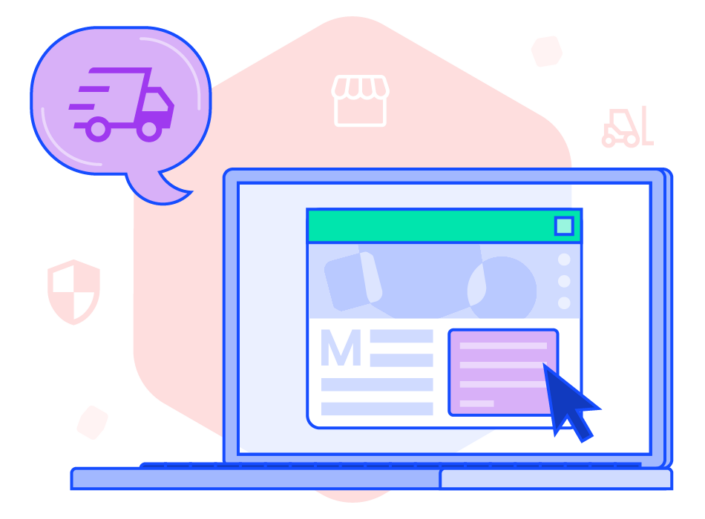If you’ve been keeping an eye on the news (or your social media feed) for the past few months, you’ve probably heard a lot about tariffs. What are tariffs, how will they affect U.S. businesses, and how should you respond? In this article, we’ll run through everything you need to know.
What are tariffs?
Simply put, tariffs are taxes on foreign-made and imported goods. They’re imposed by governments to protect domestic industries from competition and push back against unfair trade practices.
What’s happening with tariffs in the U.S. right now?
In early February, the Trump administration announced a new wave of tariffs: a 25% tax on goods imported from Mexico and Canada and a 10% tax on goods from China. A few days later, the president agreed to delay the tariffs for one month.
That one-month waiting period is now over. As of March 4, 2025, the tariffs are officially in place—25% on goods from Mexico and Canada (with the exception of Canadian energy, which has a 10% tariff), and 20% on goods from China (double the original tariff).
What are the pros of tariffs?
Tariffs are meant to protect domestic industries from competition. The idea is that by making imported goods more expensive, businesses will be more likely to buy from local suppliers instead, and consumers will purchase products made with domestically produced materials. This can strengthen the economy and lead to more jobs for American workers.
In addition to supporting domestic industries, tariffs make us less reliant on foreign countries for essential materials and products.
The COVID-19 pandemic was a prime example of the dangers of overreliance on foreign trade; during the early months, supply chain disruptions left many internationally produced products unavailable. If these products had been manufactured closer to home, businesses may have been able to keep their shelves stocked more easily.
What are the cons of tariffs?
While tariffs have benefits, they come with costs, too.
For businesses that rely on imported products or materials, these taxes drive up operating expenses. Large corporations often pass these costs onto consumers, which can affect customer satisfaction and loyalty. And for smaller businesses with limited cash flow and thin profit margins, higher costs can spell doom.
And then there’s the risk of retaliation. If other countries respond with their own tariffs, the price of American-made goods will rise in foreign markets—bad news if you often ship internationally.
How can your business navigate tariffs?
Tariffs might feel scary, but they’re not the end of the world! By adapting your supply chain strategy, cutting costs in other areas, and handling price increases tactfully, you’ll make your business stronger than ever.
1. Assess the risks
The first step in dealing with tariffs is understanding exactly how they’ll impact your business.
Start by evaluating your supply chain. Where do your products and materials come from, and how much of your inventory will be affected by these new import taxes? If you rely on goods from Mexico, Canada, or China, you could be looking at significant cost increases.
Don’t stop at your direct suppliers—consider their suppliers as well. Second- and third-tier suppliers further up the chain may also be affected by tariffs, and their increased costs could eventually trickle down to you.
Next, take a close look at your profitability. If tariffs raise your costs, how much can you absorb before your margins take a hit? Can you pass those costs on to customers without losing sales? Running the numbers now will help you avoid surprises later.
2. Diversify your supply chain
One of the best ways to protect your business from tariffs is to diversify your supply chain.
Relying too heavily on imports from countries facing steep tariffs can leave you vulnerable to rising costs. Instead, look for suppliers in countries that aren’t affected by these trade policies. (Just make sure they’re politically and economically stable, so you don’t trade one problem for another.)
In addition, consider going local. Domestic suppliers may cost more upfront, but they allow you to avoid tariffs altogether, reducing long-term risk. Plus, working with local suppliers has several other perks:
- Faster shipping times
- Better quality control
- Marketing advantages (if your customers value “Made in the USA” products)
A good rule of thumb is to spread out your sourcing across multiple companies, countries, and regions. That way, if tariffs or other supply chain issues hit one supplier, you have backups in place.
If shifting your sourcing isn’t an option, try negotiating with your existing suppliers. Can they offer better pricing if you order in larger quantities? What about more flexible payment terms that could help ease the financial burden of higher costs?
Exploring these options can help you stay ahead of tariff-related price hikes.
3. Increase operational efficiency
If tariffs are driving up costs, focus on improving efficiency across your business. The more you can streamline operations and eliminate waste, the less impact those higher import prices will have on your bottom line.
Start by identifying areas where you can cut costs without sacrificing quality or customer experience. Look for unnecessary expenses in your supply chain, fulfillment process, or day-to-day operations. Even small savings—like reducing packaging waste, optimizing shipping methods, or renegotiating service contracts—can add up over time.
Automation and process improvements can also help. Whether it’s improving warehouse logistics, using software to manage inventory more effectively, or reducing manual tasks, increasing efficiency can free up resources to help absorb rising costs.
4. Handle price increases carefully
Even if you improve efficiency across the board, it might be necessary to increase product prices in order to maintain profitability. If this is the case, it’s important to do so strategically.
For starters, make sure you understand how price increases will affect customer demand—a concept known as price elasticity. Some products can handle a price hike without much impact on sales, while others are more sensitive, meaning even a small increase could drive customers to look elsewhere. Take the time to analyze price elasticity on a product-by-product basis so you can make informed decisions.
Then, when it’s time to raise prices, follow these best practices to avoid customer frustration:
- Don’t delay. Once you decide to raise prices, don’t delay. Gradual or inconsistent increases can confuse customers, so it’s better to implement changes quickly and decisively.
- Be transparent. Be upfront about why prices are going up. Customers appreciate honesty, and a simple explanation—such as rising costs due to new tariffs—can help them understand the situation rather than assuming you’re charging more for no reason.
- Emphasize your unique value. Remind customers why they should stick with your brand. Emphasize the value you offer, whether it’s better quality, superior service, or unique features they can’t find elsewhere.
- Show appreciation. A quick thank-you—whether in an email, a social media post, or even a personal note—goes a long way in maintaining customer loyalty during times of change.
Stay informed
As the recent tariffs have proven, things change quickly in the world of logistics. If you’re looking for an easy way to stay informed about the latest news, regulations, and trends, check out EasyPost’s Unboxing Logistics podcast. Our expert guests weigh in about things like tariffs, international shipping, artificial intelligence, warehouse automation, and more.
Find every episode here or subscribe on YouTube to be alerted when new episodes drop.
And if you’re looking to simplify your shipping, check out EasyPost. With a suite of shipping APIs and dedicated solutions for enterprise shipping, load planning, supply chain consulting, and more, EasyPost helps businesses of all sizes and industries cut costs and improve delivery reliability.



